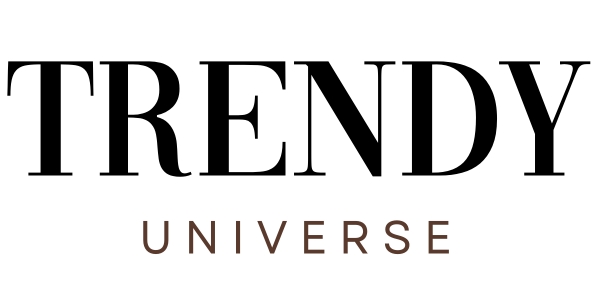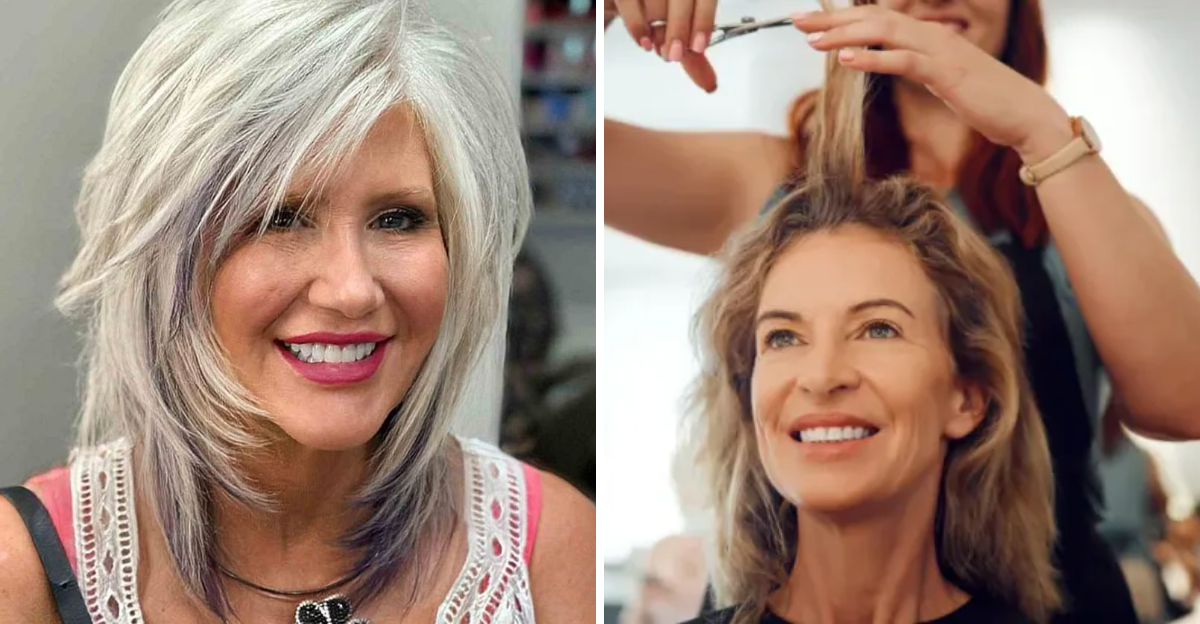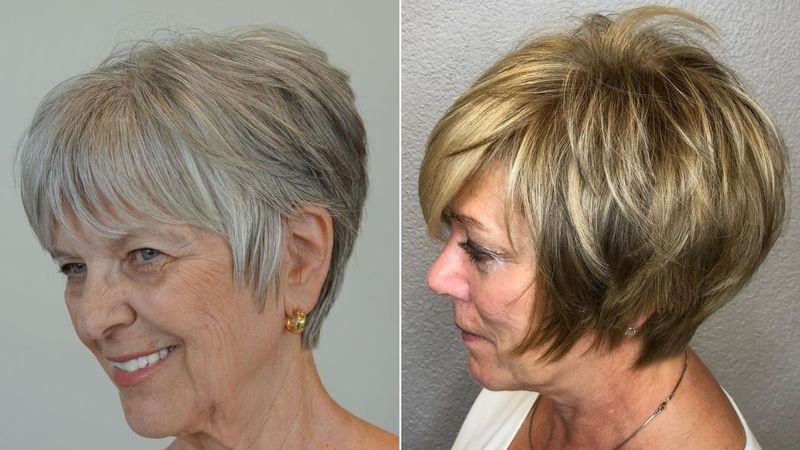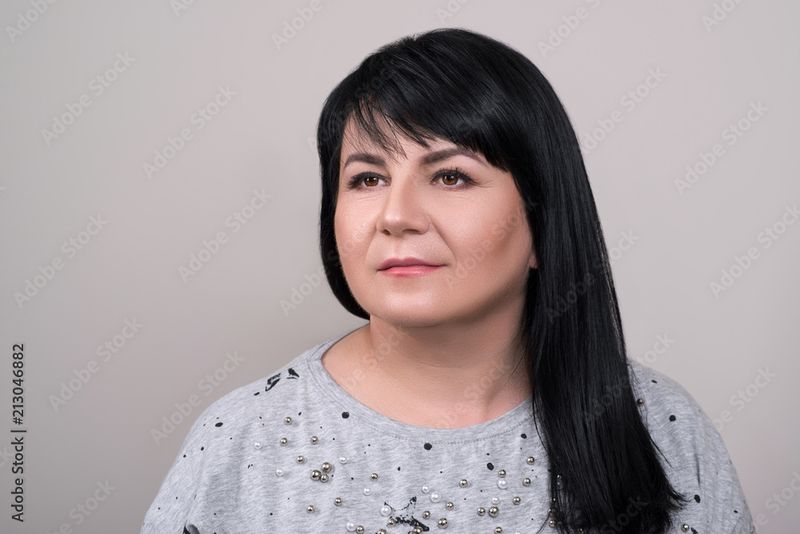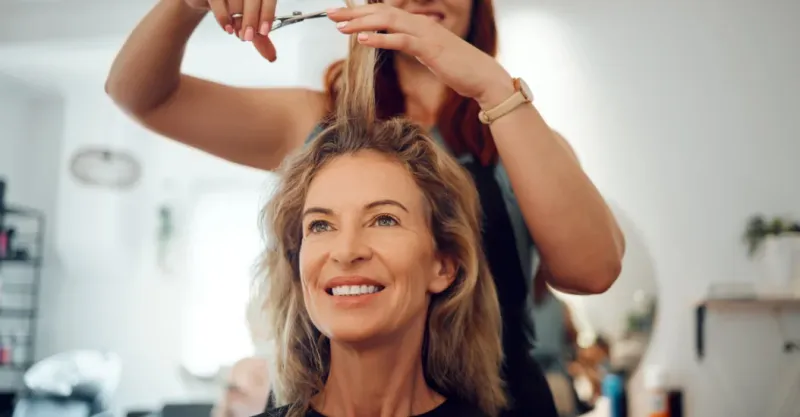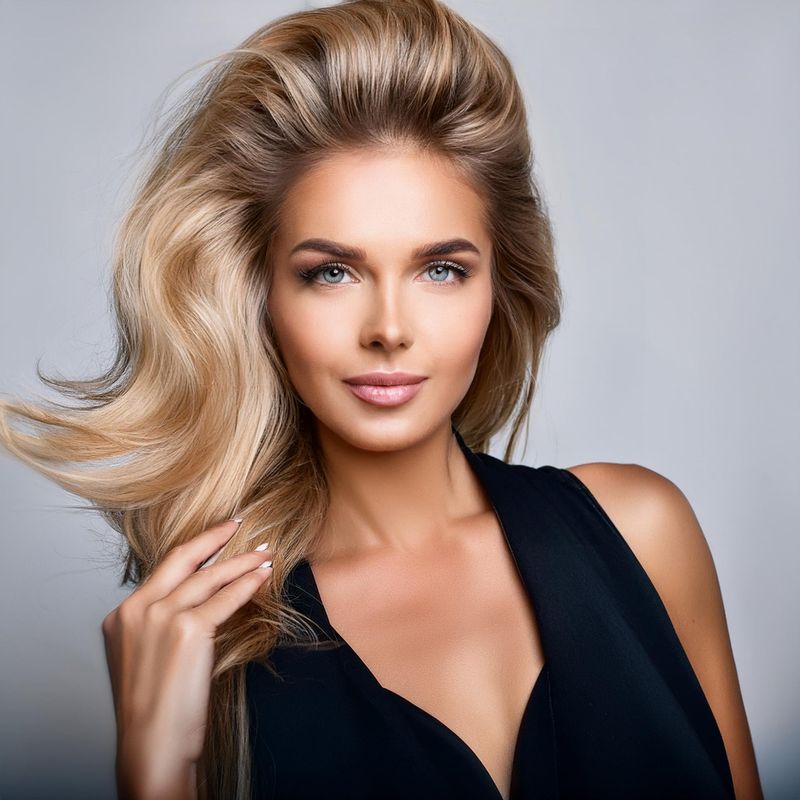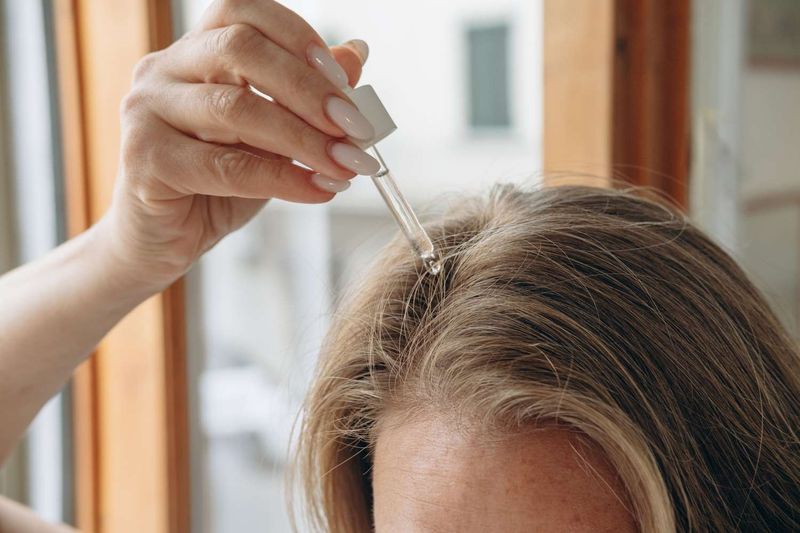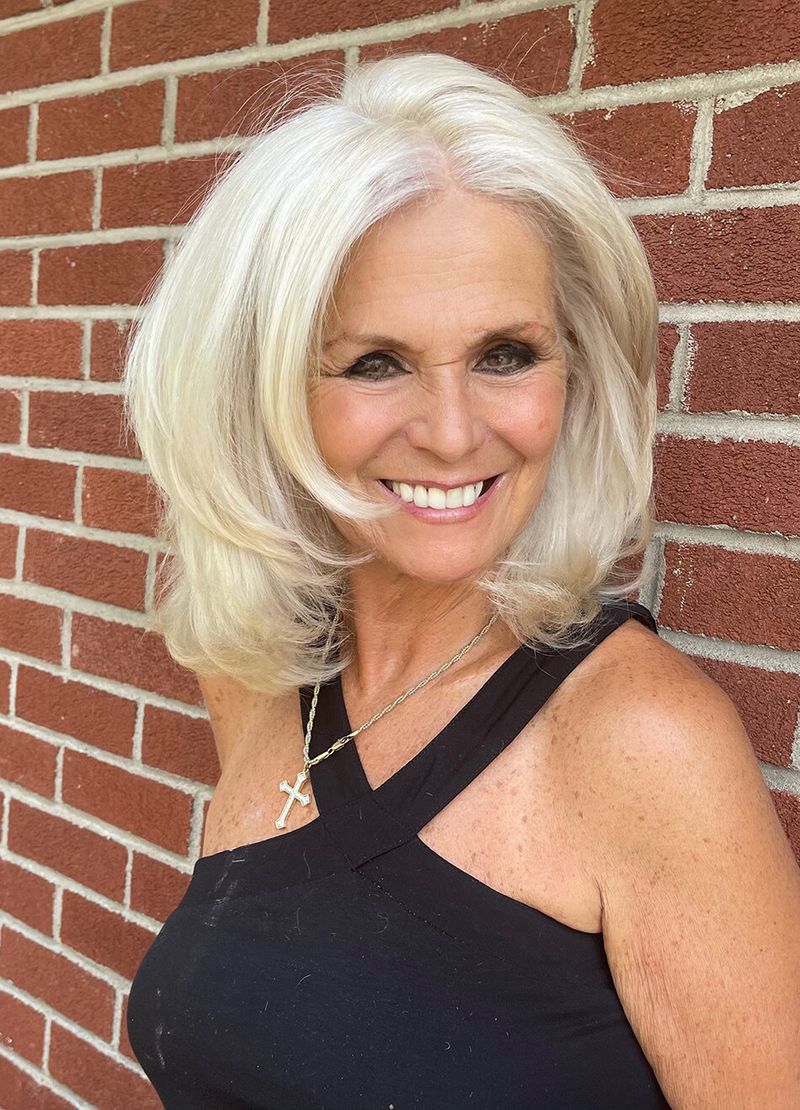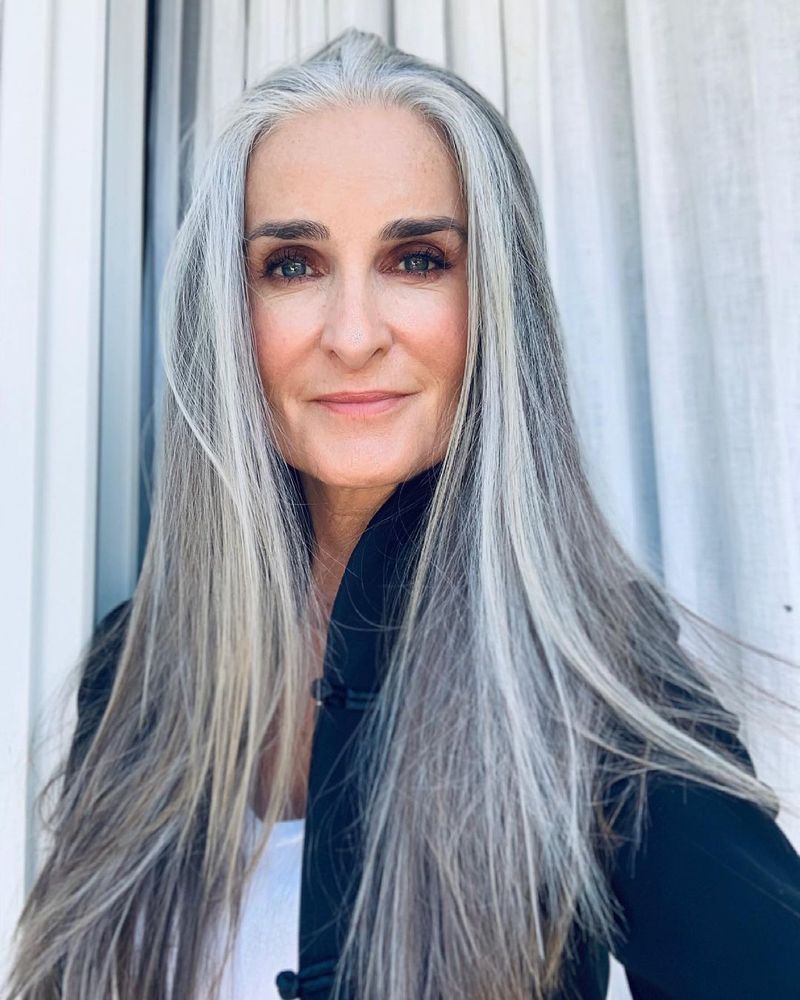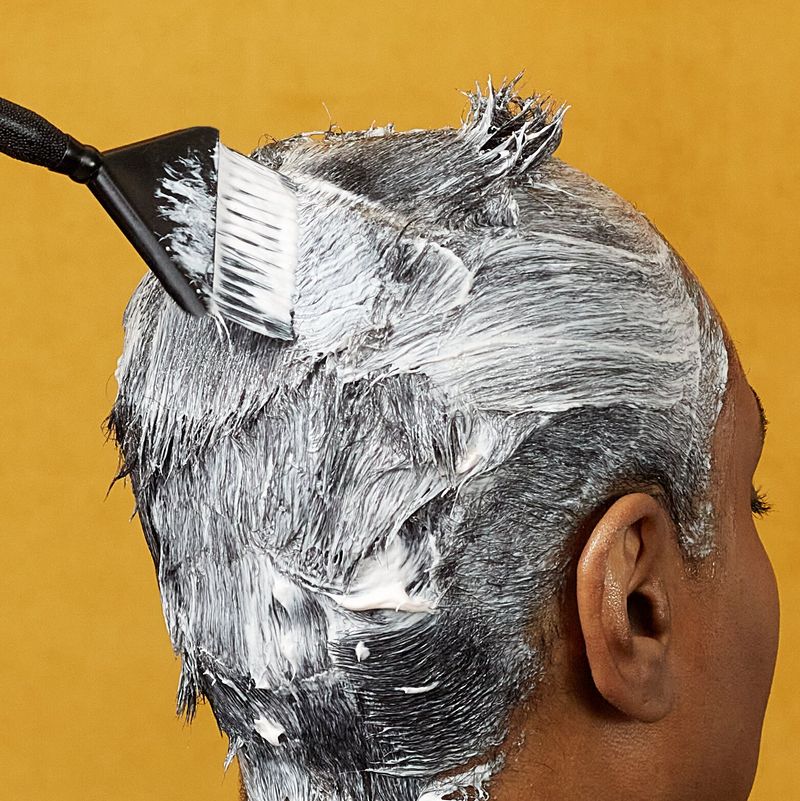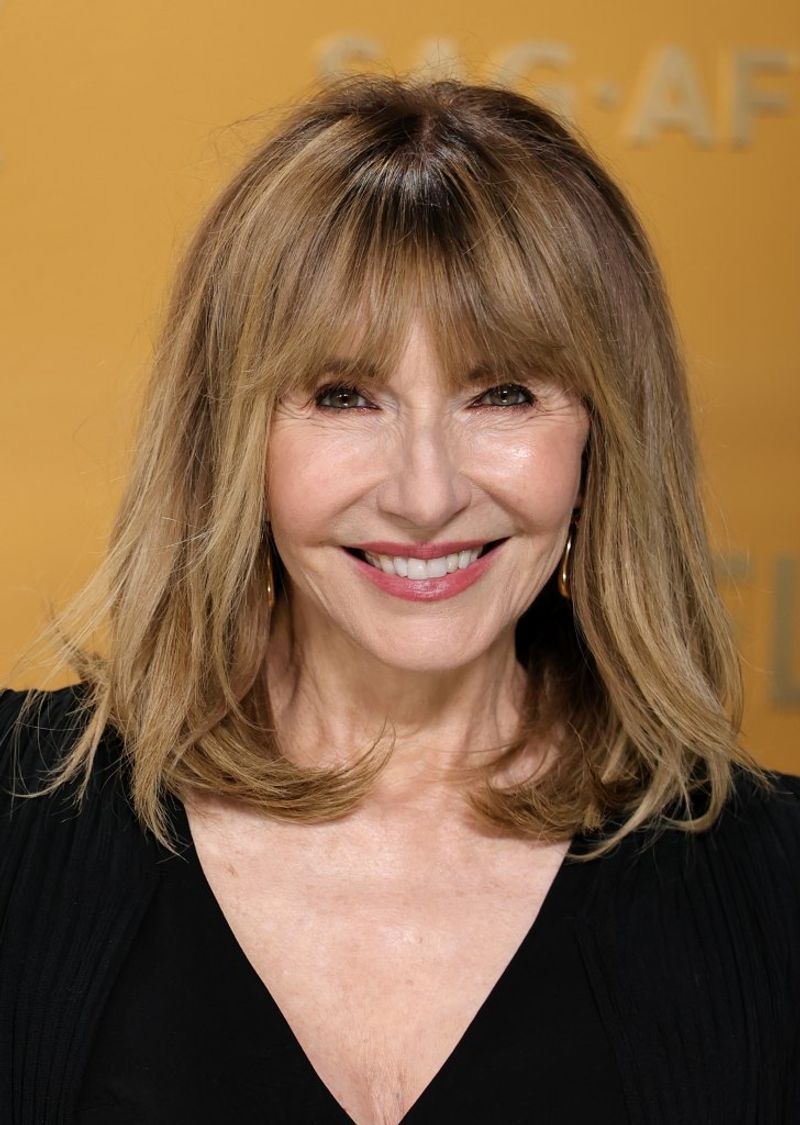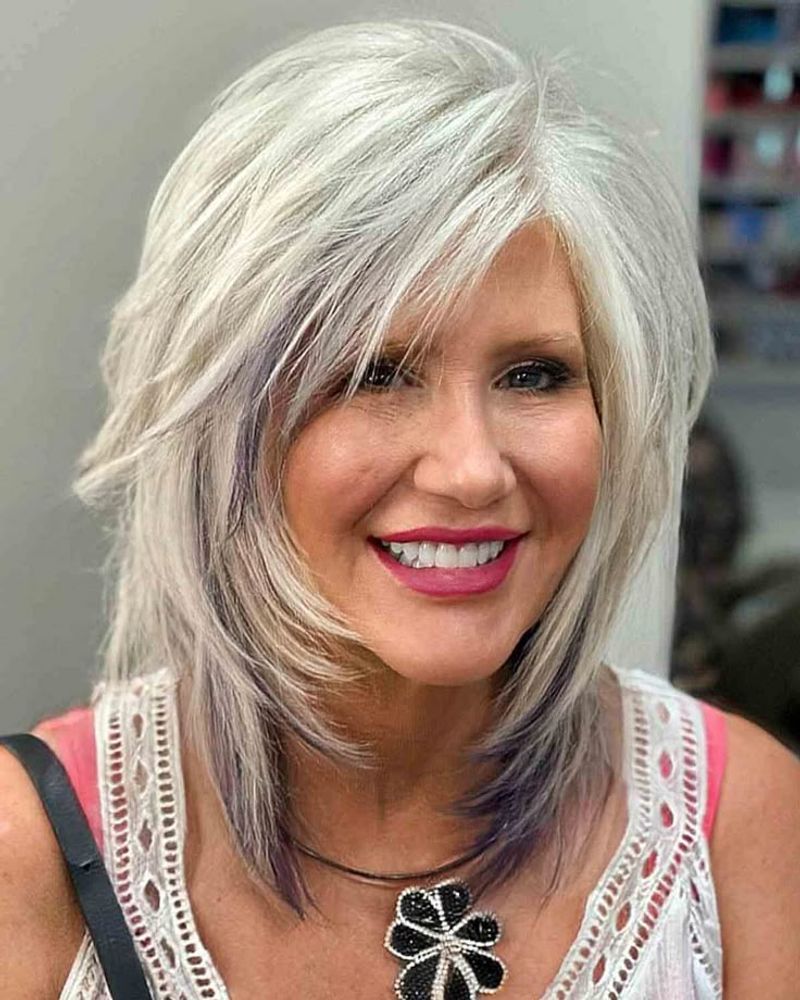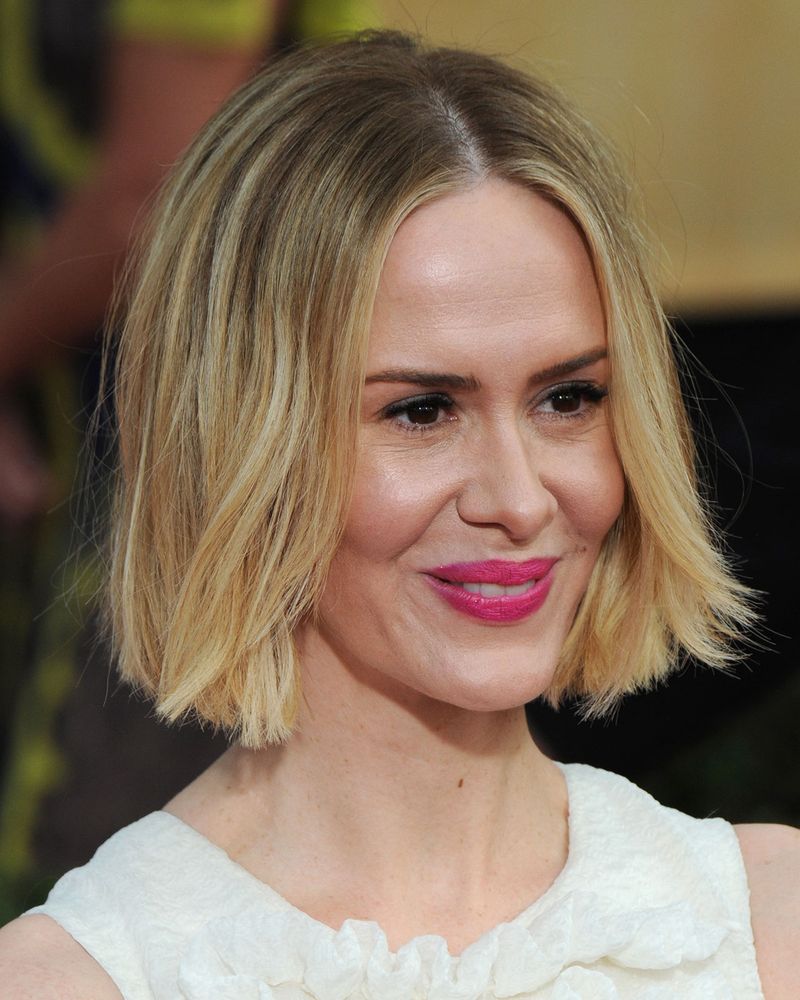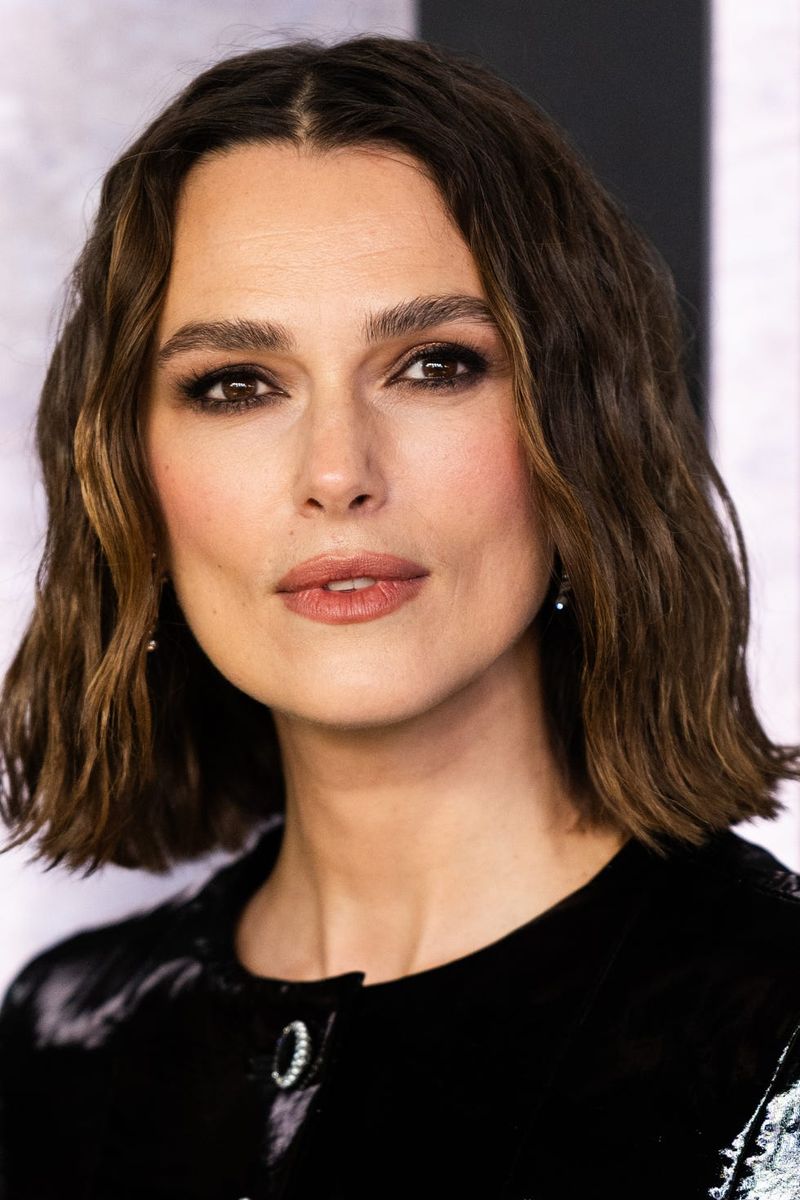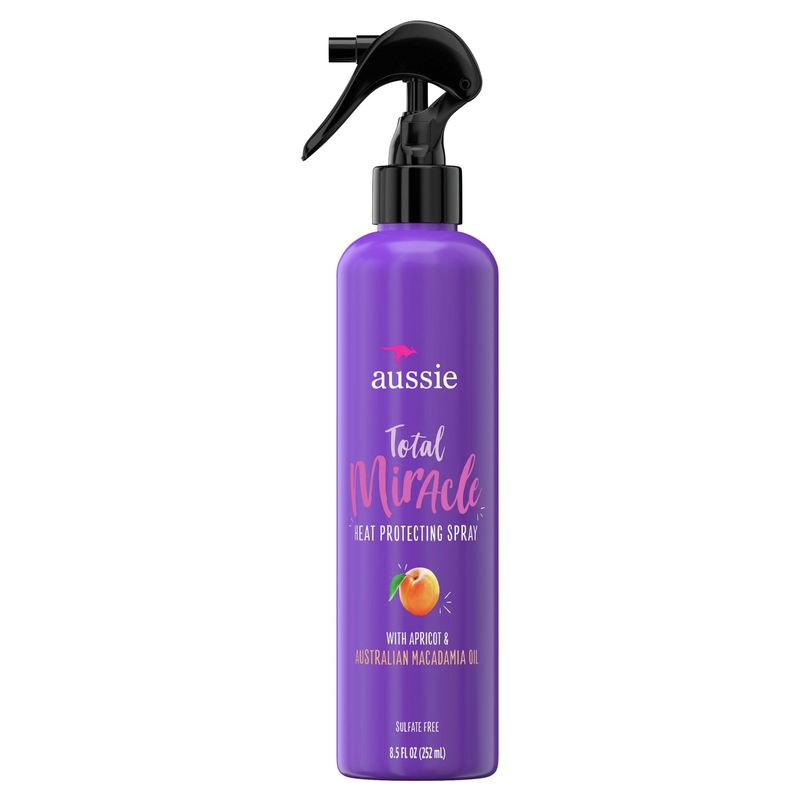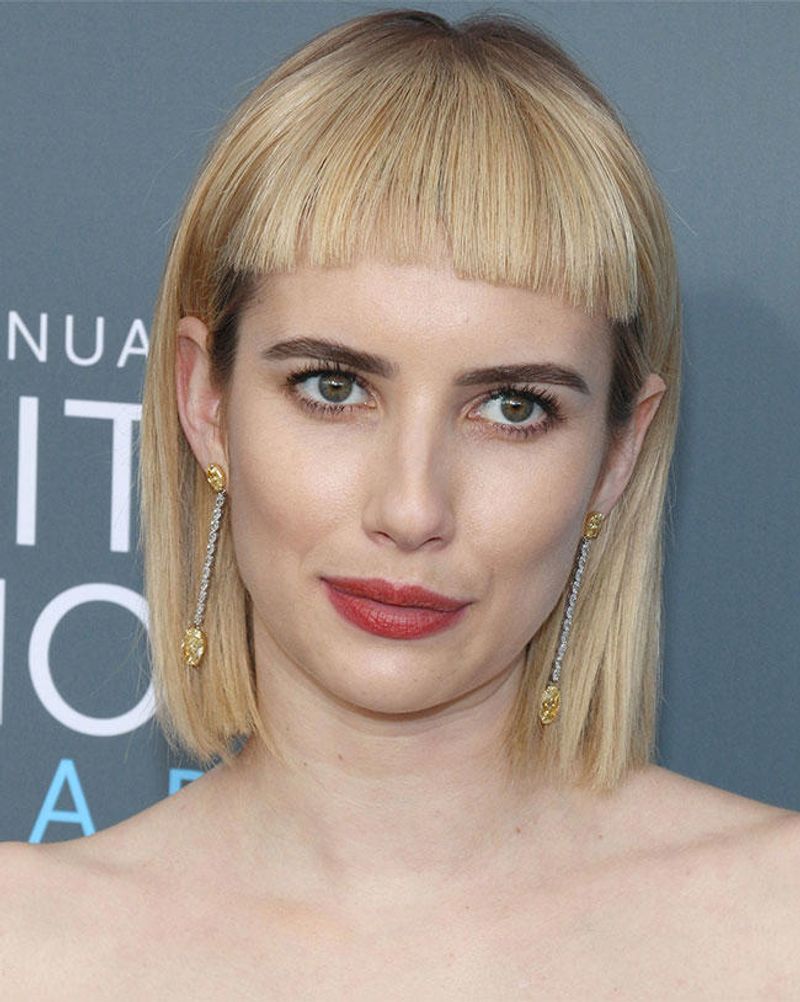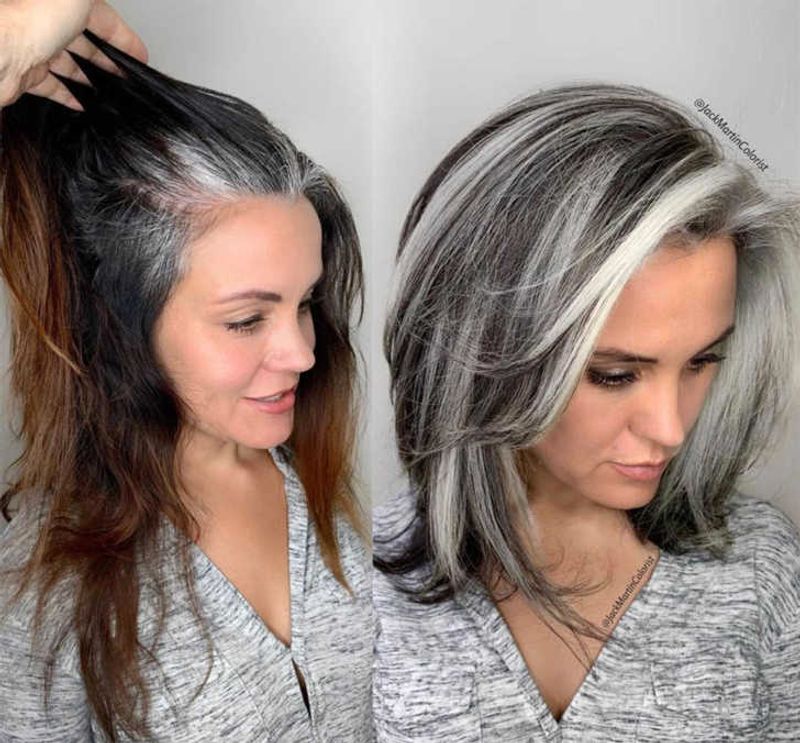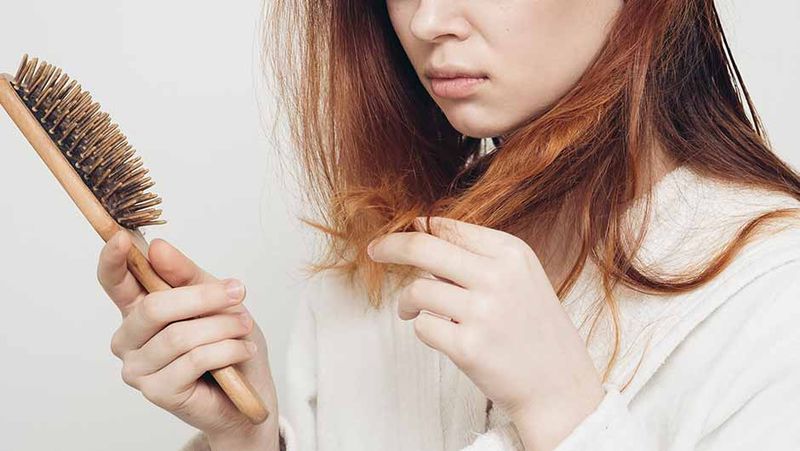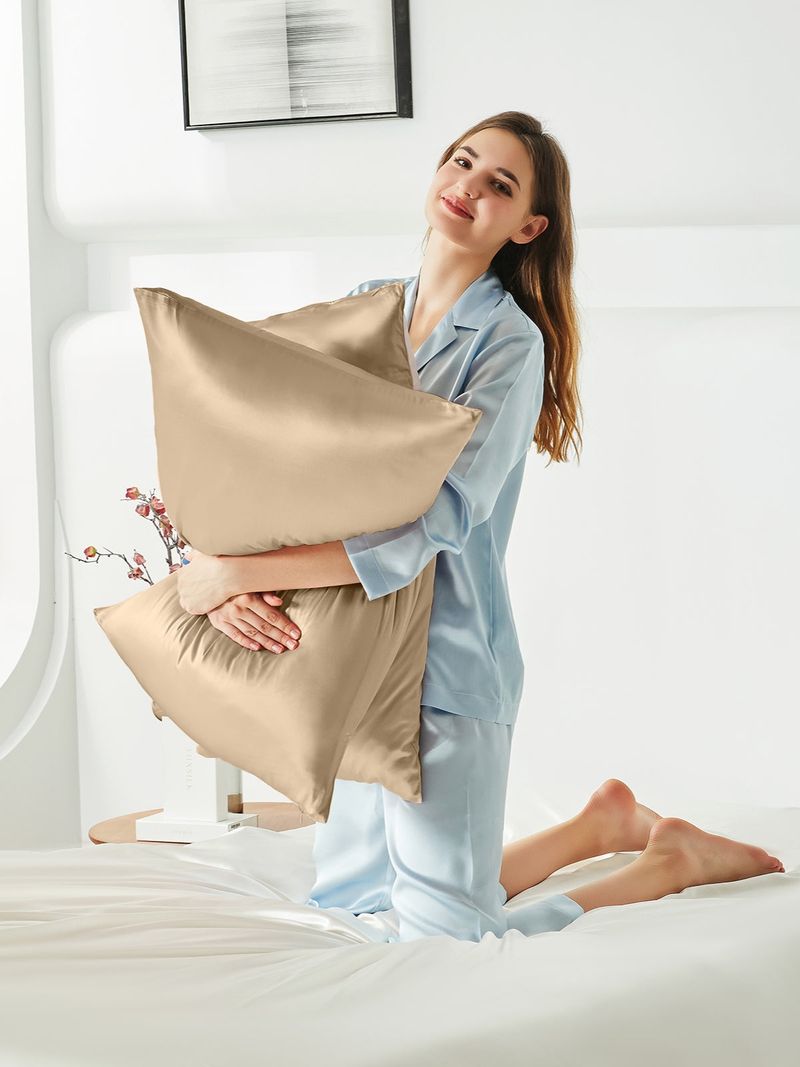Our hair changes as we age, yet many women continue styling it the same way they did decades ago. After 50, certain hair choices can unintentionally add years to your appearance or draw attention to features you’d rather downplay. Learning to avoid these common mistakes can help you look more vibrant and feel more confident in your evolving beauty.
1. Clinging to Outdated Hairstyles
Keeping the same haircut from decades ago creates a time-capsule effect that ages you instantly. Your face changes with time, and your hairstyle should evolve too. Update your look every few years with subtle tweaks that complement your current features, not the ones you had at 30.
2. Going Too Dark
Harsh, all-over dark color creates stark contrast against aging skin, highlighting fine lines and wrinkles. Natural hair typically lightens as we age, not darkens. Softer shades with dimension create a more youthful, natural appearance that brightens your complexion.
3. Skipping Regular Trims
Neglecting regular haircuts leads to split ends and thinning tips that make hair look unhealthy and unkempt. Mature hair grows more slowly and needs special attention. Schedule trims every 6-8 weeks to maintain shape and remove damage, keeping your style looking fresh.
4. Super Straight Styles
Flat-ironed, poker-straight hair can look severe and emphasize facial asymmetries that come with age. Mature faces benefit from softness around the hairline. Add gentle waves or subtle bends to create movement and dimension that flatters your features rather than highlighting every line.
5. Ignoring Your Changing Texture
Fighting against your hair’s natural aging process wastes time and damages strands. Many women notice their hair becoming coarser, thinner, or wavier after 50. Embrace these changes with products specifically formulated for mature hair to enhance what you have now, not what you had before.
6. Excessive Teasing and Backcombing
Aggressive teasing damages already fragile hair and creates an outdated, helmet-like appearance. Volume is youthful, but artificial pouf looks dated. Try volumizing mousses, root lifters, or velcro rollers instead for natural-looking body that moves naturally and doesn’t scream “fixed in place.”
7. Neglecting Scalp Health
Many women focus on hair ends while ignoring the scalp, where healthy hair begins. Hormonal changes affect oil production and can lead to dryness or irritation. Incorporate scalp treatments into your routine to stimulate circulation and create the optimal environment for hair growth.
8. Overly Bleached Blonde
Harsh platinum or all-over blonde can look brassy and damaged on mature hair. Excessive bleaching strips hair of its natural oils, making it brittle. Opt for softer blonde highlights with lowlights for dimension, or consider a warmer blonde that complements your skin’s undertones.
9. Holding Onto Extreme Length
Very long hair can drag down facial features and look disproportionate on mature women. Gravity takes its toll on both hair and facial tissues as we age. Consider a length that hits somewhere between the chin and collarbone to create lift and movement around the face.
10. Using Harsh Chemical Treatments
Strong perms, relaxers, and color processes damage hair that’s already becoming more fragile with age. Chemical treatments strip moisture and protein from hair shafts. Choose gentler alternatives like demi-permanent color or softer perming solutions specifically designed for mature hair types.
11. Choosing Blunt, Heavy Bangs
Thick, straight-across bangs create a harsh line that emphasizes forehead wrinkles rather than disguising them. Heavy bangs draw attention directly to the eye area. Side-swept or wispy bangs offer a softer alternative that camouflages lines while still framing your face beautifully.
12. Over-Layered “Shag” Cuts
Excessive layers can make thinning hair look sparse and disconnected rather than adding volume. Too many layers remove weight that mature hair often needs for structure. Choose strategic layers that add movement while maintaining enough weight to keep hair looking full and healthy.
13. Ignoring Face-Framing Layers
Hair that hangs like curtains on either side of your face creates shadows that emphasize jowls and neck laxity. Flat, shapeless cuts add years instantly. Soft layers around the face create movement and draw the eye upward, highlighting your best features instead of problem areas.
14. Severe Center Parts
A straight-down-the-middle part can emphasize facial asymmetry that becomes more pronounced with age. Center parts also highlight thinning at the crown. Try a soft side part or slightly off-center part to create the illusion of fullness and balance facial features more flatteringly.
15. Skipping Heat Protection
Using hot tools without protective products causes cumulative damage to already vulnerable mature hair. Heat styling breaks down protein bonds in the hair shaft. Always apply a heat protectant before blow-drying, curling, or straightening to maintain hair integrity and prevent brittle, frizzy ends.
16. Helmet-Like Short Cuts
Super-short, uniform cuts that hug the head create a severe, aging appearance. These dated styles emphasize every facial contour change. Even short hair needs some softness and texture to look modern and flattering. Ask for varied lengths that can be styled with movement.
17. Ignoring Gray Coverage Options
All-or-nothing thinking about gray hair limits your options unnecessarily. Many women believe they must either color completely or go entirely gray. Consider partial coverage, lowlights, or gray blending techniques that work with your natural color for lower maintenance and a more modern look.
18. Using the Wrong Brush Type
Brushes that are too stiff or inappropriate for your hair texture cause breakage and frizz. Mature hair requires gentler handling than younger hair. Invest in quality brushes designed for your specific hair type and concerns, such as boar bristle for fine hair or wide-tooth combs for curls.
19. Neglecting Nighttime Protection
Cotton pillowcases create friction that damages fragile hair while you sleep. Tossing and turning all night on rough fabric leads to breakage and frizz. Switch to a silk or satin pillowcase or use a nighttime hair wrap to minimize friction and help styles last longer.
